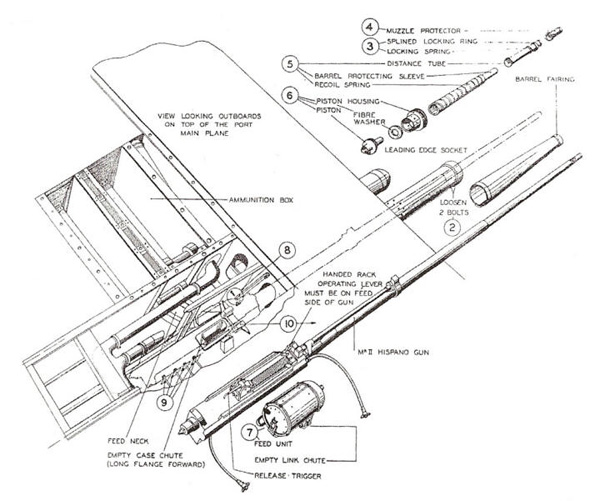
|
 |
Hispano-Suiza HS.404 |
 |
 |
 |
 |
 |
|---|---|---|---|---|---|---|---|
 |
 |
 |
 |
 |
|||

Hispano-Suiza (Spanish-Swiss) was a Spanish automotive and engineering firm, best known for its luxury cars and aviation engines in the pre-World War II period of the twentieth century. The firm was first organized in France in 1904 as a branch of Spanish La Cuadra automobile firm, formed by artillery Captain Emilio de la Cuadra. In 1923 its French subsidiary became a semi-autonomous partnership with the parent company. The French company, Hispano-Suiza S. A., located in Bois Colombes, built a 150 hp, V-8 water-cooled, aircraft engine and was one on the preeminent engine manufacturers at the time. Swiss engineer Marc Birkigt was an engineer with the firm and designed the HS.404 in 1933. The Hispano-Suiza HS.404 was a lightweight 20 mm autocannon that used a high explosive shell. Due to its relative lightweight it was a popular gun on light vehicles and aircraft and used widely by British, French, American and other military forces. The HS.404 was fed by 60 round drum magazines and had a rate of fire of 700 RPM with a muzzle velocity of 2900 ft/s. In 1941, a belt-feeding system was developed by Martin-Baker for the slightly modified Hispano Mk.II. Four cannons replaced the eight .303 Browning machine guns in Hurricanes and in some tropical versions of the Spitfire. It became standard armament in later fighters, however, most Spitfires had only two cannons along with its .303s because the cannons tended to freeze at high altitudes. The best British version the Hispano Mk. V, with a lighter shorter barrel and higher rate of fire although muzzle velocity was reduced. The Hawker Tempest Mk. V Series II, used the Mk. V cannon and had two cannons mounted in each wing. The USA version was the M1 and used by the United States Army Air Corps (USAAC) and US Navy but they were prone to misfiring. Some variations of the guns used on the Lockheed P-38 Lightning were produced by International Harvester. The gun was modified again as the M2 , but was just as unreliable as the M1. The gun was again modified as the M3/M24, but problems persisted leading to most USA fighters relying on the M2 .50 caliber machine gun throughout the war. |
Browning .303 Cal. MG Browning M2 50 Cal. MG Foster Mount Lewis MG Vickers MG Mg 151/20 Cannon M4 37 mm Cannon Mk 108 .30 mm Cannon HS.404 .20 mm Cannon
| |
|
© The Aviation History Online Museum. All rights reserved. Created December 26, 2012. | ||